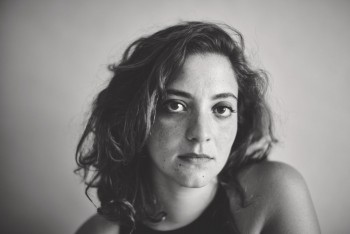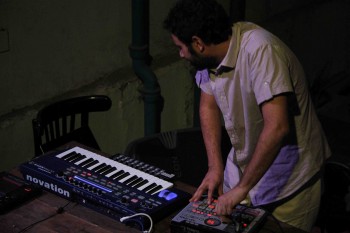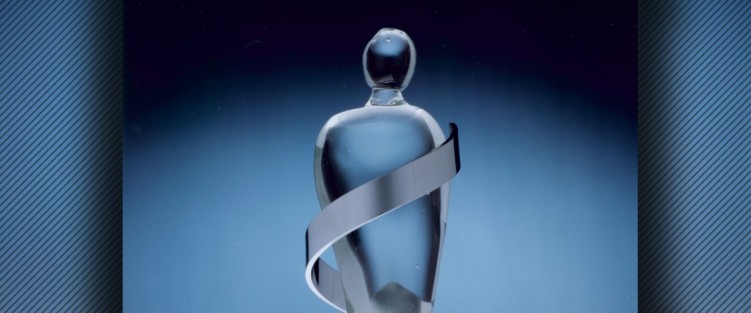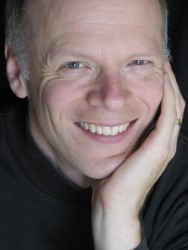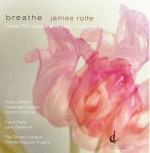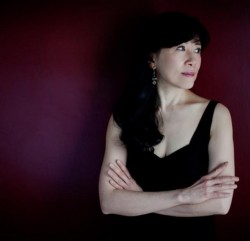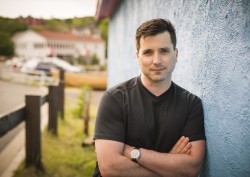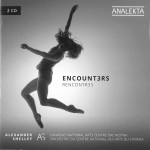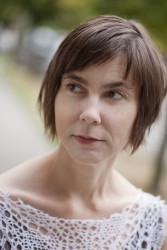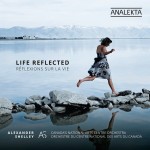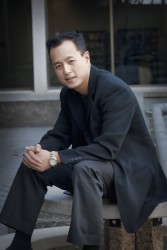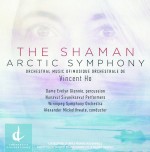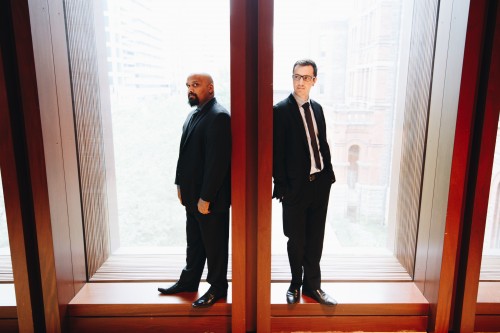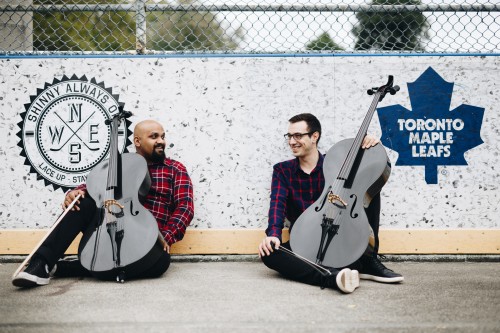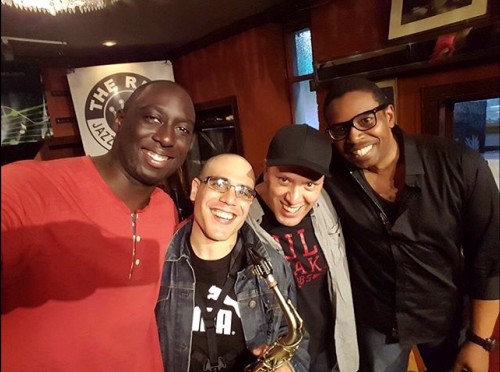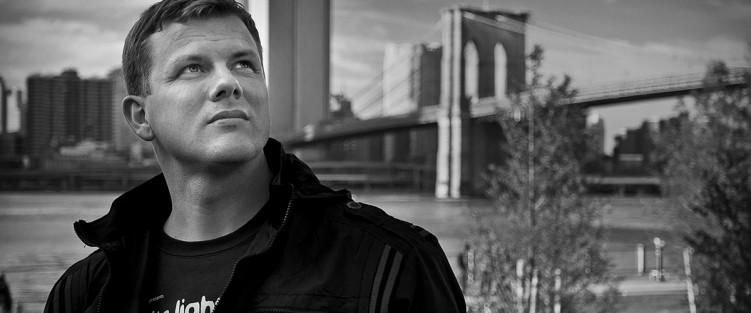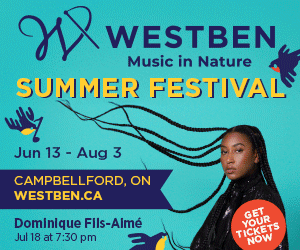Delving into Why – Sam Shalabi's Land of Kush
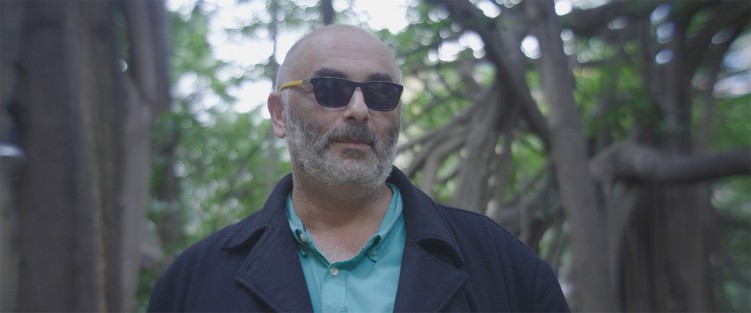 Though he now splits his time between Montreal and Cairo, guitarist, oudist and composer Sam Shalabi was born in Libya to Egyptian parents. He and his family immigrated to Canada when he was five. He started his musical career in Montreal in the mid-90s, and has played guitar and oud with a number of different groups, including the critically acclaimed Shalabi Effect, which he has led since its inception in 1996.
Though he now splits his time between Montreal and Cairo, guitarist, oudist and composer Sam Shalabi was born in Libya to Egyptian parents. He and his family immigrated to Canada when he was five. He started his musical career in Montreal in the mid-90s, and has played guitar and oud with a number of different groups, including the critically acclaimed Shalabi Effect, which he has led since its inception in 1996.
On Saturday, March 24, Shalabi’s Land of Kush will play at the Aga Khan Museum as part of the institution’s Global Conversations Series, presented in partnership with the Music Gallery. Land of Kush is a large ensemble, with over 20 members slated to play at the Aga Khan, and will feature as special guest artists the Cairo-based musicians Nadah El Shazly (vocals) and Maurice Louca (keyboards), both of whom are frequent collaborators of Shalabi’s.
Land of Kush will be performing Shalabi’s Sand Enigma, the latest in a series of six large-scale compositions written specifically for the ensemble, three of which so far (Against The Day, Monogamy and The Big Mango) have been released by Montreal’s Constellation Records.
WN: Sand Enigma will have its world premiere here at the Aga Khan at the end of March?
SS: Yes.
So this will be the fourth release for Land of Kush, is that correct?
I think it’s going to be a release at some point… but it’s going to be logistically difficult to record it, that’s the only thing, because Maurice and Nadah … they live in Egypt, and they’re going to go back to Egypt, and so it’s going to be a bit difficult to record it. But in terms of the fourth piece, it’s not the fourth piece, actually. There’s actually six pieces, only three of which have been [recorded].
And so the last recording that was released would have been The Big Mango.
That’s right.
Two of the prominent themes [of] The Big Mango were gender and Arabic culture. I was wondering if those figured into Sand Enigma – and if not, what are some of the themes that came into play when you were writing and conceptualizing this work?
[Sand Enigma] is kind of an unusual piece, in that in some ways it’s probably the least explicit piece that I think I’ve done, partially because the piece … was meant to be a solo album. And so the pieces were kind of written in a weird way, [in that] they were not meant to be played by humans (laughs).
… [It] started its life first as pieces that I wanted to do with Nadah El Shazly, and then that didn’t really work out due to time, because we were working on her album. And then I thought, well, “I’m going to take these pieces and adapt them to a solo album,” because there is a kind of thematic continuity with the pieces. And then as I was working on it, I realized that it might be interesting to try something which I’ve never done before, which is to take solo pieces, and somehow try to adapt them for Kush, which took a little while to do for the reason that some of the music was not meant to be played by [other] people. So I had to simplify it and re-notate it and tweak it.
In terms of the theme, there is a theme to [Sand Enigma], but I’m kind of resistant to say what it is …[it’s] a kind of a mirror, in a way; the piece has kind of a mirror quality to it, to whoever is listening to it or experiencing it. That’s all I’ll say.
Kind of like a theme, or perhaps a collection of themes, that reveals itself within the actual performance of the piece [in front of] an audience?
Yes, exactly, exactly.
So what do [Maurice Louca and Nadah El Shazly] – the special guests for this particular performance – bring to this piece that’s unique, and maybe different than some of the previous things that you’ve done with this ensemble?
Well, they bring the sand (laughs). Part of it is a natural thing, I guess, a natural collaboration, and part of it is a desire of mine to have more of that [as] part of what I do in Kush. Since at least Monogamy, or just after Monogamy, I’ve been working with Maurice, and that’s become a big part of what I do. I play with him in two bands, and tour with him a lot, and we’ve collaborated a lot. And then Nadah, we’ve worked a lot in Egypt, and collaborated on her album, and collaborated on other things, and so… it [seemed] like a sort of natural progression to work with two musicians I love working with, and two friends. But the other part of it, I think, is that I can kind of do things with them that I might not necessarily be able to do without them, in that I can do more maqam … They just bring out another set of references that I have been working with in my solo stuff. In terms of the more Arabic, Egyptian sounds… it’s a little bit more foreign for a lot of the members of Kush to completely dive into that, so I think with Nadah and Maurice I was more free to write music that I knew, and in particular [music that] Nadah would be able to sing, because she’s used to singing stuff like that.
You’ve said about modern Egyptian classical ensembles that, even though they incorporate a fair number of Western sounds or Western instruments, they’re not exactly fusion ensembles; that they’re taking from other practices in order to evolve from within, to grow of their own volition. I was wondering if that’s an accurate description of Land of Kush, and what you think about the terms “fusion” and “world music.”
I think that the important thing is to do something that feels somewhat natural, and feels somewhat right. So I think that, in terms of the fusions, or the music, whatever I do obviously my Egyptian background and my Arabic background is a big part of it. But it’s not the only thing.
I think, basically, you have to have something interesting to say. It doesn’t necessarily have to be earth-shatteringly meaningful, but it should be something that at least for you, as a writer or as a musician, is interesting. And I think that requires delving into yourself, delving into why you would even have anything to say. And so to say that what I’m doing is fusion, or is world music, at this point, I don’t really care if people describe it as that. There’s stuff that I’ll do that sounds like it could be Western music, or stuff that I do that sounds like it’s completely Arabic music. I think the interesting thing for me is how to tap into something that is a synthesis of all that, that is already in myself or in an individual, and that feels or sounds not contrived, to myself and to whoever else is involved in it, or is listening to it.
I definitely need something to say … there has to be some reason. Hence the space between Kush pieces, why there’s a certain number of years between the pieces, and why we almost never do the same piece more than twice. We almost never perform these pieces more than once or twice, because I think they are kind of something that I need to do, as opposed to something that I feel like I should be doing.
And so that’s what it is. It’s sort of a re-engagement with who I am, as a writer, as a musician, a person, whatever; and trying to do that every time, if that makes sense. I don’t know if that makes sense (laughs).
Absolutely, it makes sense. Ultimately it doesn’t matter how someone else might describe it, what you’re trying to do is to create something that feels honest and relevant to you as an individual.
Yeah, exactly, exactly, exactly. And so those elements are there because those are interests that I have. They’re not conscious. If they were, it would be something that I would be less interested in.
Colin Story is a jazz guitarist, writer, and teacher based in Toronto. He can be reached at www.colinstory.com, on Instagram and on Twitter.


